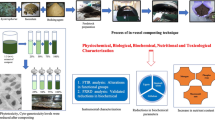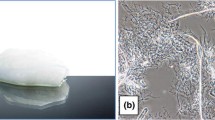Abstract
Polycaprolactone (PCL) powders were prepared from PCL pellets using a rotation mechanical mixer. PCL powders were separated by sieves with 60 and 120 meshes into four classes; 0–125 μm, 125–250 μm, 0–250 μm and 250–500 μm. Biodegradation tests of PCL powders and cellulose powders in an aqueous solution at 25°C were performed using the coulometer according to ISO 14851. Biodegradation tests of PCL powders and cellulose powders in controlled compost at 58°C were performed by the Mitsui Chemical Analysis and Consulting Service, Inc. according to ISO 14855-1 and by using the Microbial Oxidative Degradation Analyzer (MODA) instrument according to ISO/DIS 14855-2. PCL powders were faster biodegraded than cellulose powders. The reproducibility of biodegradation of PCL powders is excellent. Differences in the biodegradation of PCL powders with different class were not observed by the ISO 14851 and ISO/DIS 14855-2. An enzymatic degradation test of PCL powders with different class was studied using an enzyme of Amano Lipase PS. PCL with smaller particle size was faster degraded by the enzyme. PCL powders with regulated sizes from 125 μm to 250 μm are proposed as a reference material for the biodegradation test.











Similar content being viewed by others
References
Yavuz H, Babac C (2003) J Polym Environment 11(3):107
B-Y Shin, S-l Lee, (2004) Y-S Shin, Balakrishnam, Sunder; Narayan, Ramani; Polym Eng Sci. 44(8):1429
ISO 14855–1:2005(E), “Determination of the ultimate aerobic biodegradability of plastic materials under controlled composting conditions–Method by analysis of evolved carbon dioxide–Part 1: General method”, ISO 2005
Gattin R, Cretu A, Barbier-Baudry D (2003) Macromol Symp 197:455
Ohtaki A, Akakura N, Nakasaki K (1998) Polym Degrad Stab 62:279
DERVAL DOS Santos Rosa, TULIO CESAR Rodrigues, Cuedes, Cristina das Gracas Fassina J. Appl. Polym. Sci. 89(13):3539
Sivalingma G., Chattopadhyay S, Madras G (2003) Polym Degrad Stab 79:413
Funabashi M, Kunioka M (2005) Green Chem 5:591
ISO 14851:1999(E)/Cor 1:2005, “Determination of the ultimate aerobic biodegradability of plastic materials in an aqueous medium–Method by measuring the oxygen demand in a closed respirometer”, ISO 2005
Funabashi M, Kunioka M (2004) Macromol Symp 224:309
ISO/DIS 14855–2:2006(E), “Determination of the ultimate aerobic biodegradability of plastic materials under controlled composting conditions–Method by analysis of evolved carbon dioxide–Part 2: Gravimetric measurement of carbon dioxide evolved in a laboratory-scale test”, ISO 2006
Joo SB, Nam IM, Soon YS, San J (2005) Macromol Symp 224:355
Kunioka M, Ninomiya F, Funabashi M (2006) Polym Degrad Stab 91:1919
Author information
Authors and Affiliations
Corresponding author
Rights and permissions
About this article
Cite this article
Funabashi, M., Ninomiya, F. & Kunioka, M. Biodegradation of Polycaprolactone Powders Proposed as Reference Test Materials for International Standard of Biodegradation Evaluation Method. J Polym Environ 15, 7–17 (2007). https://doi.org/10.1007/s10924-006-0041-4
Published:
Issue Date:
DOI: https://doi.org/10.1007/s10924-006-0041-4




